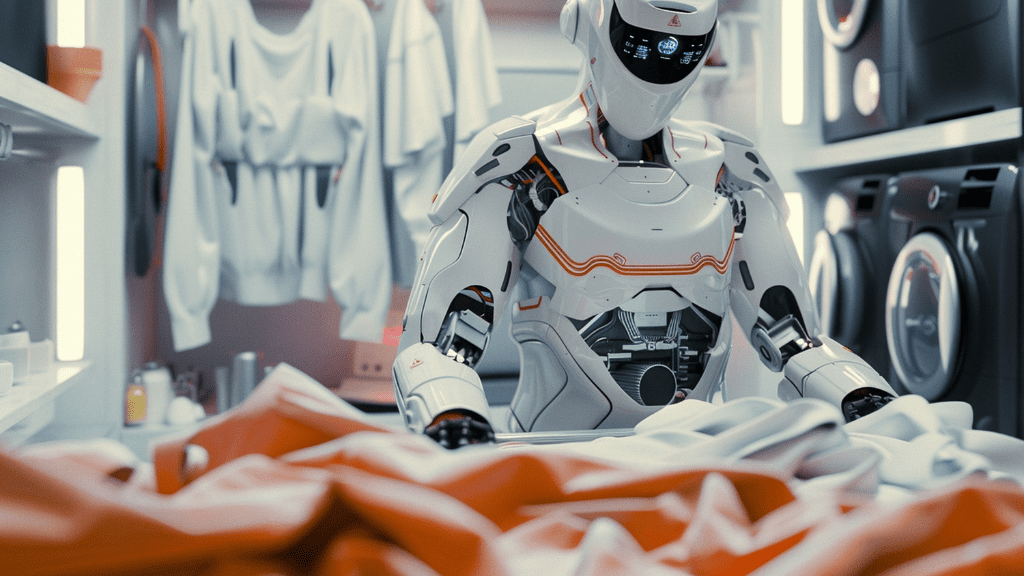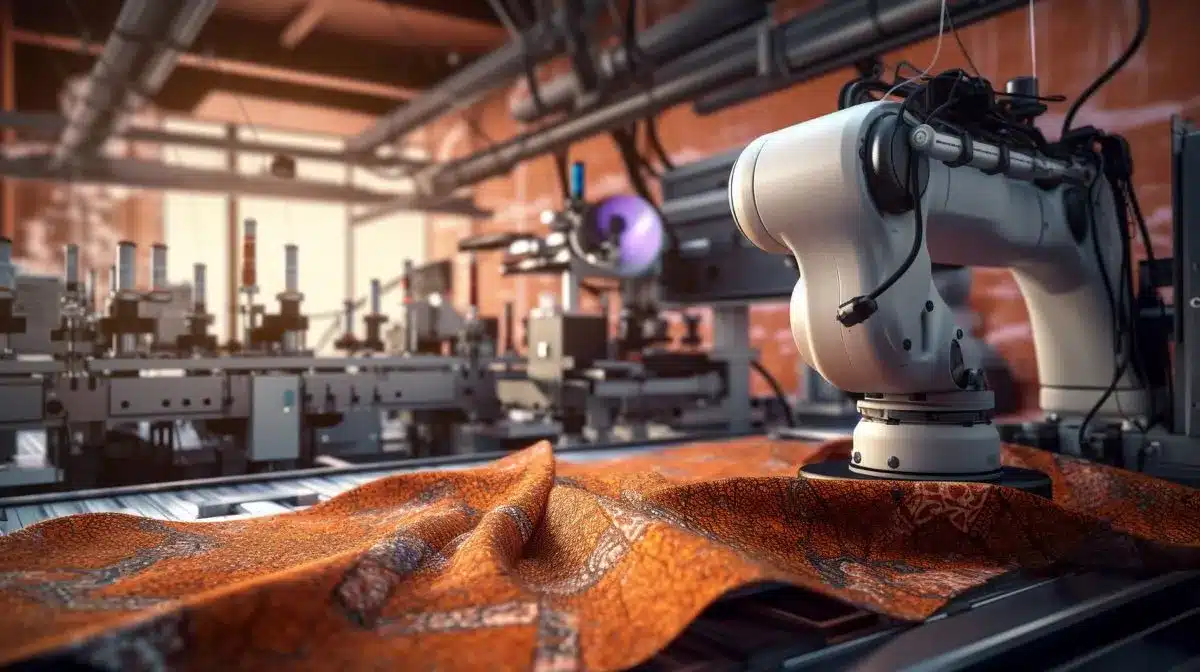Dr.N.N. MAHAPATRA
B.Sc (Hons) B.Sc (Tech )(Bom) M.Sc (Chem), Ph.D (Chem), M.B.A (IMM, Cal) C.Col FSDC (UK),
CText FTI (Manchester ), FRSC (UK ) Int Trg (Australia)), Sen Mem, AATCC (USA), FAIC (USA)
FIC, FTA, FICS, FIE, FIIChE, MISTE (INDIA)
Business Head(Dyes)
Shree Pushkar Chemicals & Fertilisers Ltd.
Artificial Intelligence is poised to transform the textile manufacturing sector. Its applications, ranging from automating production processes to enhancing quality control, have the potential to revolutionise the industry comprehensively. Textiles influence nearly every aspect of daily life, from clothing to home furnishings. However, textile manufacturers encounter various challenges, including intense competition, supply chain issues, rising costs, and inefficiencies. AI presents solutions to these obstacles while also creating new avenues for growth and innovation. This article examines the impact of AI on the textile industry and how businesses can utilise AI to maintain competitiveness.
AI is among the most discussed technologies today, extending its influence beyond textiles to finance, healthcare, and automotive sectors. While its use in creative fields may spark debate, many experts believe that AI can address persistent challenges in the textile industry.
Understanding Artificial Intelligence (AI)
Artificial intelligence replicates human intelligence in machines designed to think and behave like people. It is a vast field within computer science focused on creating machines capable of executing tasks that typically necessitate human intellect. The term AI also refers to machines that display characteristics associated with human cognition, such as the ability to learn and solve problems.
Reasons for AI Adoption in Textile Industries
The increasing demand for quality has led to a rise in automated AI applications within textile industries in recent years. Advances in technology and modelling have made automation more prevalent in textile production. Over the past two decades, AI has gained traction in the industry, automating various processes like spreading, cutting, sewing, and material handling to reduce production costs and minimise errors.
AI’s application across all stages of textile manufacturing—pre-production, production, and post-production—has become crucial as industries strive for greater automation to meet consumer demands. The adoption of AI helps decrease faults and maintain low production costs while being utilised in numerous operations such as design development, fabric spreading, cutting, bundling, sewing tasks, pressing, ironing, packaging, quality control, and supply chain management (SCM).
Key Applications of AI in the Textile Industry
- Optimise Textile Production
AI-powered robots are increasingly utilised in textile mills to automate repetitive tasks such as material handling and cutting. This automation not only improves precision and accuracy but also significantly boosts productivity by minimising human errors. AI systems analyse extensive data sets from production processes to optimise scheduling, ensuring that resources are allocated efficiently and production timelines are met.
- Auto-Schedule Predictive Maintenance
Textile businesses leverage AI-driven sensors and monitoring systems to anticipate equipment failures before they occur. By analysing patterns in machine performance, AI can schedule maintenance proactively, reducing unexpected downtimes and enhancing overall productivity. This predictive maintenance approach allows companies to streamline their operations, ensuring that machinery is maintained only when necessary, thus optimising resource use.
- Production Planning and Control (PPC)
AI plays a crucial role in coordinating various departments involved in production to ensure the timely delivery of orders. It aids in solving complex challenges related to machine layout, operation assignments, and sewing line balancing. With AI’s assistance, textile manufacturers can enhance their PPC processes, leading to improved efficiency and adherence to delivery schedules.
- Dyeing & Color Matching
Colour quality is vital in textiles, as it directly influences consumer perception of product quality. AI enhances the accuracy of colour matching and dye formulations through advanced algorithms that assess colour consistency and predict fading. By optimising dyeing processes, AI reduces the waste of materials like water and energy while ensuring that the final product meets colour standards.
- Fabric Defect Identification
AI technologies such as sensors and cameras equipped with machine learning algorithms improve the quality control processes in textile manufacturing. These systems can detect defects like holes or uneven stitching in real-time with high accuracy, significantly reducing reliance on manual inspections. This capability not only lowers labour costs but also minimises the risk of defective products reaching consumers.
- Pattern Inspection
AI replaces traditional visual inspections with automated vision-based systems that evaluate fabric patterns for defects or inconsistencies. Using techniques like Artificial Neural Networks (ANN), these systems analyse images of fabrics to identify imperfections based on learned patterns, enhancing detection efficiency while reducing human error.
- Sewn Seam Evaluation
The performance of sewn seams is critical in garment manufacturing. AI systems assess the sewability of different fabrics by analysing their mechanical properties such as tensile strength and shear resistance during production. This capability ensures that only suitable fabrics are used for specific seam types, improving overall product quality.
- Minimise Supply Chain Risks
AI analytics empower textile manufacturers to forecast demand accurately, optimise production schedules, and manage inventory effectively. By identifying potential supply chain disruptions early on, AI helps companies mitigate risks proactively, ensuring a smoother flow of materials from production to retail.

- Inventory Management
AI enhances inventory management by analysing sales data to predict future demand trends accurately. This allows textile companies to make informed decisions regarding stock levels, reducing the likelihood of stockouts or overstock situations. Additionally, AI identifies slow-moving items, enabling companies to adjust their inventory strategies accordingly.
- Design Textiles
Generative AI assists textile designers in creating innovative patterns and textures at an accelerated pace. By analysing consumer preferences through data-driven insights, designers can tailor their creations to better align with market demands. Computer-Aided Design (CAD) software integrated with AI further streamlines the pattern-making process, enhancing productivity.
- Market Analysis & Demand Forecasting
AI’s ability to analyse vast amounts of data enables textile companies to gain insights into market trends and consumer preferences effectively. By forecasting future trends based on historical data, businesses can adapt their strategies proactively, ensuring they remain competitive in a dynamic market environment.
- Energy Management
AI optimises energy consumption within textile factories by monitoring usage patterns and identifying areas of waste. This not only reduces energy costs but also minimises environmental impact by promoting sustainable practices within manufacturing operations.
- Final Inspection
Automated inspection systems powered by AI enhance the final quality checks on finished products by utilising image processing technologies for accurate assessments. This method reduces reliance on human inspectors, increasing efficiency while maintaining high-quality standards throughout production.
- Virtual Showroom Simulation
AI-driven virtual reality (VR) technology creates immersive experiences for showcasing textile products to customers in engaging ways. Companies can simulate production processes or new designs within virtual environments, allowing for innovative testing and feedback before actual production begins.
- Apparel Retail Optimisation
In e-commerce settings, AI analyses customer data to personalise shopping experiences based on individual preferences and behaviours. This capability enables retailers to recommend products more effectively, increasing conversion rates and customer satisfaction.
- Reinforcement Learning Applications
Reinforcement learning techniques enable AI systems to optimise decision-making processes across various manufacturing tasks such as cut-order planning and inspection decisions by learning from past actions and outcomes.
- Enhanced Communication
Natural language processing capabilities allow businesses to automate communication with buyers efficiently. By streamlining interactions through chatbots or automated messaging systems, companies can provide personalised experiences while minimising errors associated with manual communication.
- Data Analysis Capabilities
AI facilitates comprehensive data analysis within the textile industry, enabling manufacturers to predict consumer trends accurately and align their merchandising operations accordingly. This capability helps reduce errors in decision-making processes while enhancing responsiveness to market demands.
Overall, these applications illustrate how AI is set to revolutionise the textile industry by driving efficiency, innovation, and competitiveness across various stages of production and retail operations.
The impact of AI on the textile industry is significant:
- Trend-Spotting: Artificial intelligence enables fashion brands to enhance their operations by swiftly identifying the latest fashion trends, a task that traditionally could take days or even months to accomplish.
- Machine-Assisted Designs: AI tools can analyse and learn from various images, allowing them to autonomously generate entirely new fashion designs.
- Customer Experience: AI enhances customer engagement through personalised advertising notifications, alerts on price reductions, and assistance with inquiries via chatbots. Additionally, it can act as a personal stylist by providing instant outfit suggestions, thereby helping fashion brands elevate customer experiences.
It appears that almost every sector is utilising the advantages of AI, including the garment and textile industries. However, there are additional technologies, such as the Internet of Things (IoT), deep learning, and blockchain, that textile companies can also leverage to enhance their operations.
- AI can optimise supply chain logistics, ensuring timely delivery of raw materials, which ultimately saves costs and enhances quality.
- By employing AI, machines can make more informed decisions regarding when, where, and what to produce, leading to reduced costs and waste in textile mills.
- Furthermore, AI facilitates more efficient data collection, allowing companies to manage their supply chains more effectively.

